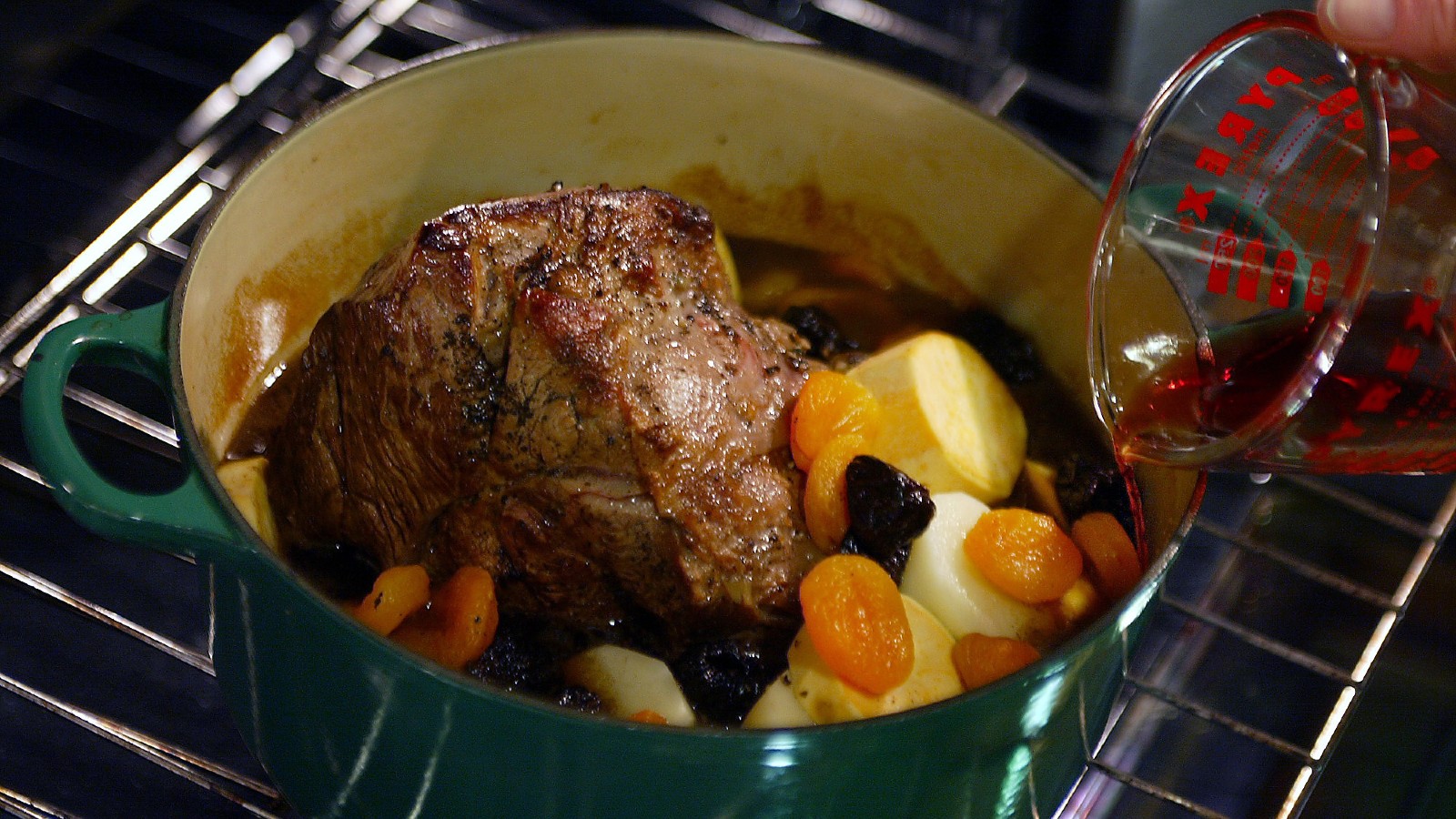Tzimmes (sometimes tsimmes) is a slow-cooked root vegetable stew with fruit, schmaltz and often meat. Bestselling author Michael Wex calls it a cousin to cholent. For Ashkenazi Jews from the shtetl days of the Middle Ages up to the 21st century, it’s most closely associated with Rosh Hashanah. The sweetness from the fruit (and sometimes honey) in the tzimmes fits right in with the Rosh Hashanah tradition of eating sweet foods for a sweet new year.
Pronounced ZIMM-es, there are various theories for the name. Joan Nathan, the matriarch of contemporary Ashkenazi Jewish cooking, explains that the word tzimmes comes from the German “zum Essen” (for eating), which would be roughly the same in Yiddish. Then there’s the wildcard theory that tzimmes is connected to the English word “simmer.” Leah Hadad of Jewish Food Experience offers another explanation:
“The first-known use of the Yiddish name tzimmes is from 1892, and it is said to have originated from the German zuomuose, or ‘side dish.’ Merriam-Webster dictionary breaks it down to zuo (at, to) and imbīz (light meal).”
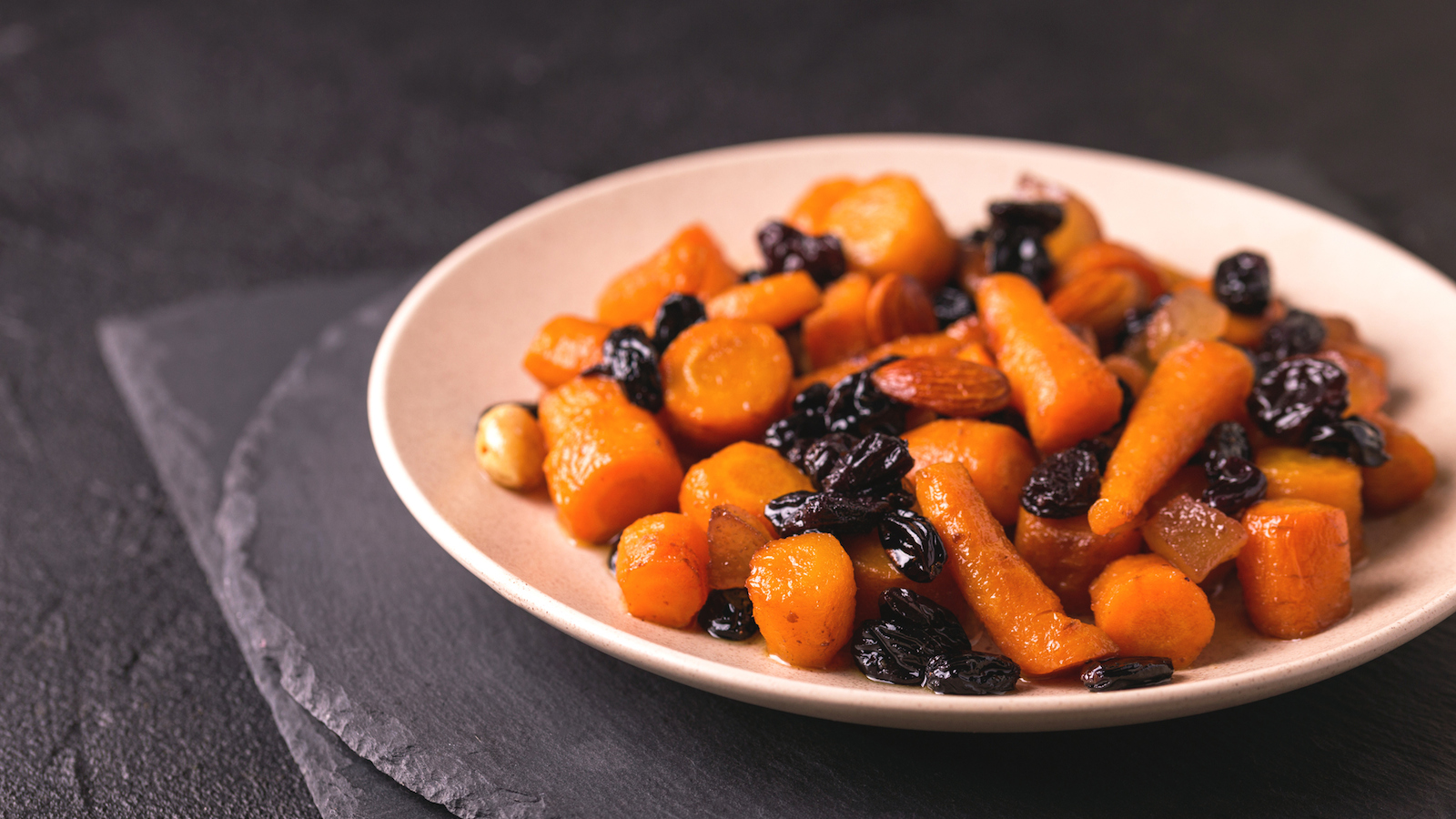
Regardless of the dish’s etymological origins, most modern Jews are likely more familiar with the colloquial use of tzimmes to mean “making a fuss.” The saying refers to the preparation of the dish itself, which requires peeling several vegetables, cutting them up for the stew and waiting for the dish to cook.
The Nosher celebrates the traditions and recipes that have brought Jews together for centuries. Donate today to keep The Nosher's stories and recipes accessible to all.
Wex offers additional idiomatic insight, noting that a person coming from the upper echelons of society can be described in Yiddish as “coming from the tzimmes,” just as you might call someone a member of the upper crust of society in English. Or, as he put it, “only Yiddish can portray Caroline Kennedy as a glistening vegetable stew.”
So where does tzimmes — the dish — actually come from? The late food historian Gil Marks explains in his “Encyclopedia of Jewish Food” that tzimmes has to have at least one root vegetable — a building block of the dish since it first appeared on Jewish tables in Germany during the Middle Ages. The original stew included both parsnips and turnips, as well as meat. It wasn’t until the 15th century that carrots joined the pot; their circular shape when cut resembled coins, and they came to symbolize good luck and a prosperous new year.
Wex suggests that the first tzimmes may have been based on a recipe from a 1393 non-Jewish cookbook “Le Ménagier de Paris,” that called for chopped turnips, carrots and gourds cooked in honey. Half a millennia later, an 1896 Yiddish cookbook instructed readers to simmer a turnip with schmaltz and sugar. “Pieces of peeled, chopped turnip are covered with sugar that has been browned in schmaltz; they are then sprinkled with flour and steamed,” writes Wex. “Some broth is added and it is all left to cook. The author recommends ‘adorning’ it with fried, breaded calf’s spleen.” Funky.
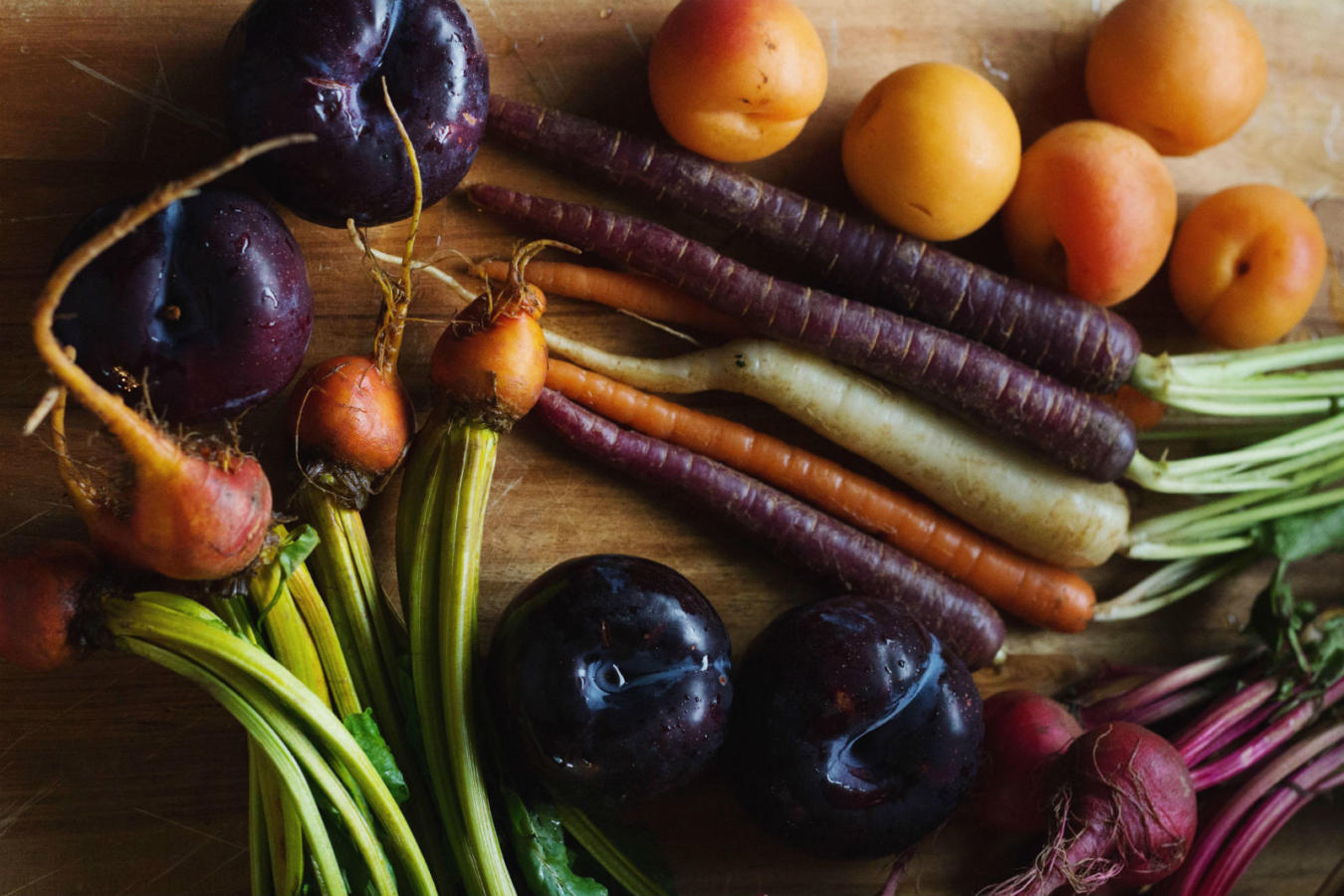
As Jews migrated from the Rhineland across Central Europe to Poland and Russia, tzimmes traveled with them. And as potatoes made their way from the Americas to Europe, they started showing up in tzimmes pots. By the 19th century, they were a staple alongside apricots, honey, plums and even pineapple for their added sweetness. Wex writes that the introduction of pineapple to the dish started out as “a token of freedom, stewed proof that the old country was really behind us.”
Ashkenazi Jews from Eastern Europe are responsible for tzimmes’ introduction to the United States following 19th century immigration. The New World changed diets and intensified traditional recipes, namely by adding more meat and sugar, which were cheap and plentiful, and tzimmes continue to evolve as a dish. By 1949, Leah Leonard’s “Jewish Cookery” offered about a dozen tzimmes recipes, including a Balkan version with lima beans and honey. Nowadays it’s common to find tzimmes with sweet potatoes, brown sugar and cinnamon.
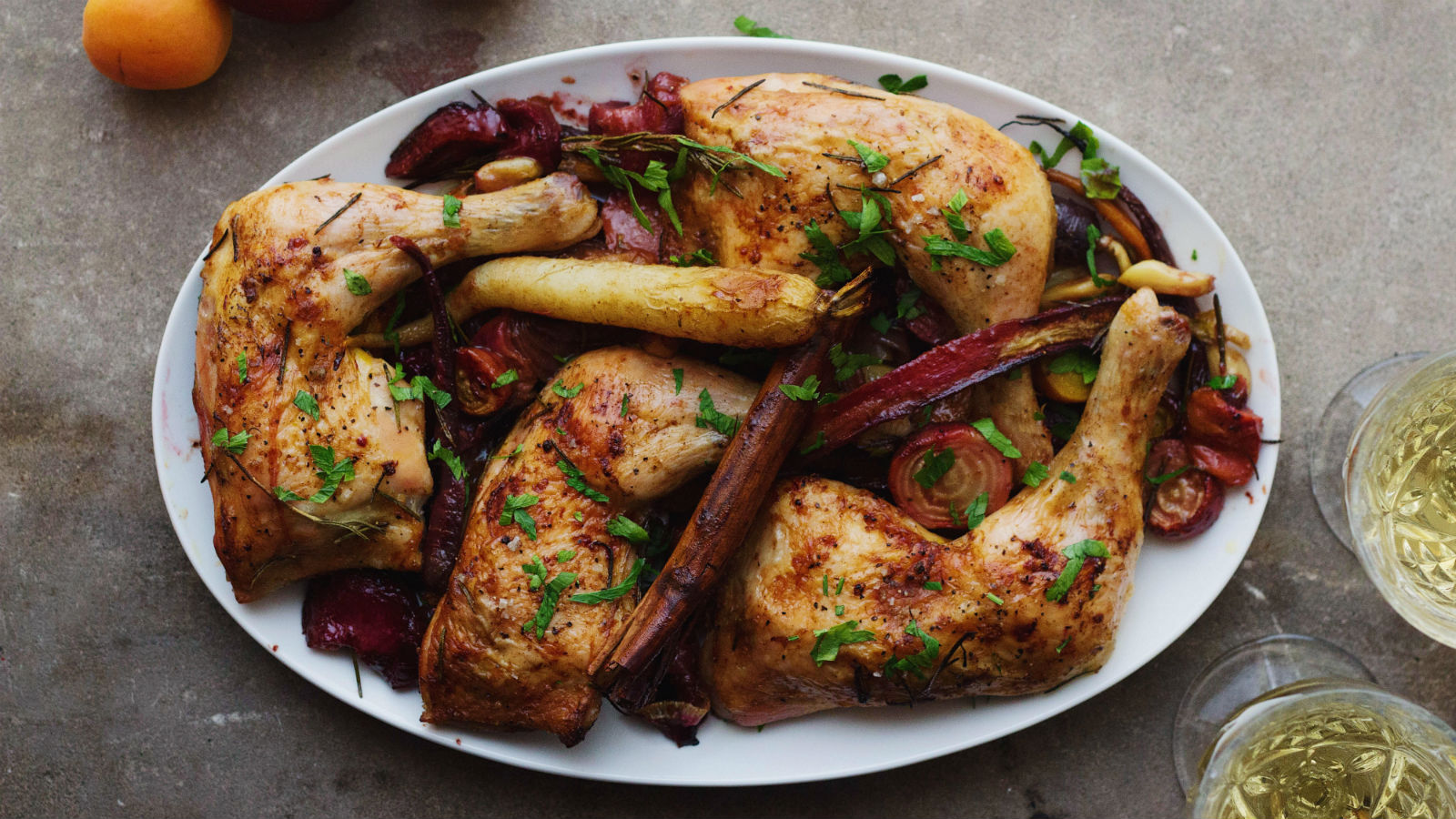
That said, American Jews do not have a monopoly on tzimmes. In a piece for CNN, Joan Nathan recalls encountering tzimmes in Jerusalem at the home of Israelis born in Argentina. The dish was served in a large squash filled with sweet potatoes, meat and carrots alongside peaches, corn and tomatoes. (Of course, the dish originally reached Argentina by way of Russian and Polish Jewish immigrants.) “I later learned that this was a Jewish version of a Latin stew called Carbonada Criolla,” she writes.
Nathan has also noted that Mexican Jews similarly add some of their favorite staples, like ground chiles, cilantro and even beans. Then from Lithuania to South Africa, you’ll find Jews adding beets and even topping off their tzimmes with a kugel crust during Passover that consists of potato and matzo meal. Writing for the New York Times, Nathan best sums up the malleableness of the dish, “I have tasted many versions of tsimmes throughout my career writing about Jewish food, always fascinated by the evolution of this dish throughout the diaspora.”
Nathan herself has published different recipes. For her New York Times recipe, she includes eight ounces of prunes. Elsewhere she’s left out the prunes in favor of the sweetness of honey, while throwing in a beet and turnips. Both versions, however, include the traditional flanken — a German and Yiddish term referring to a cut of short ribs.
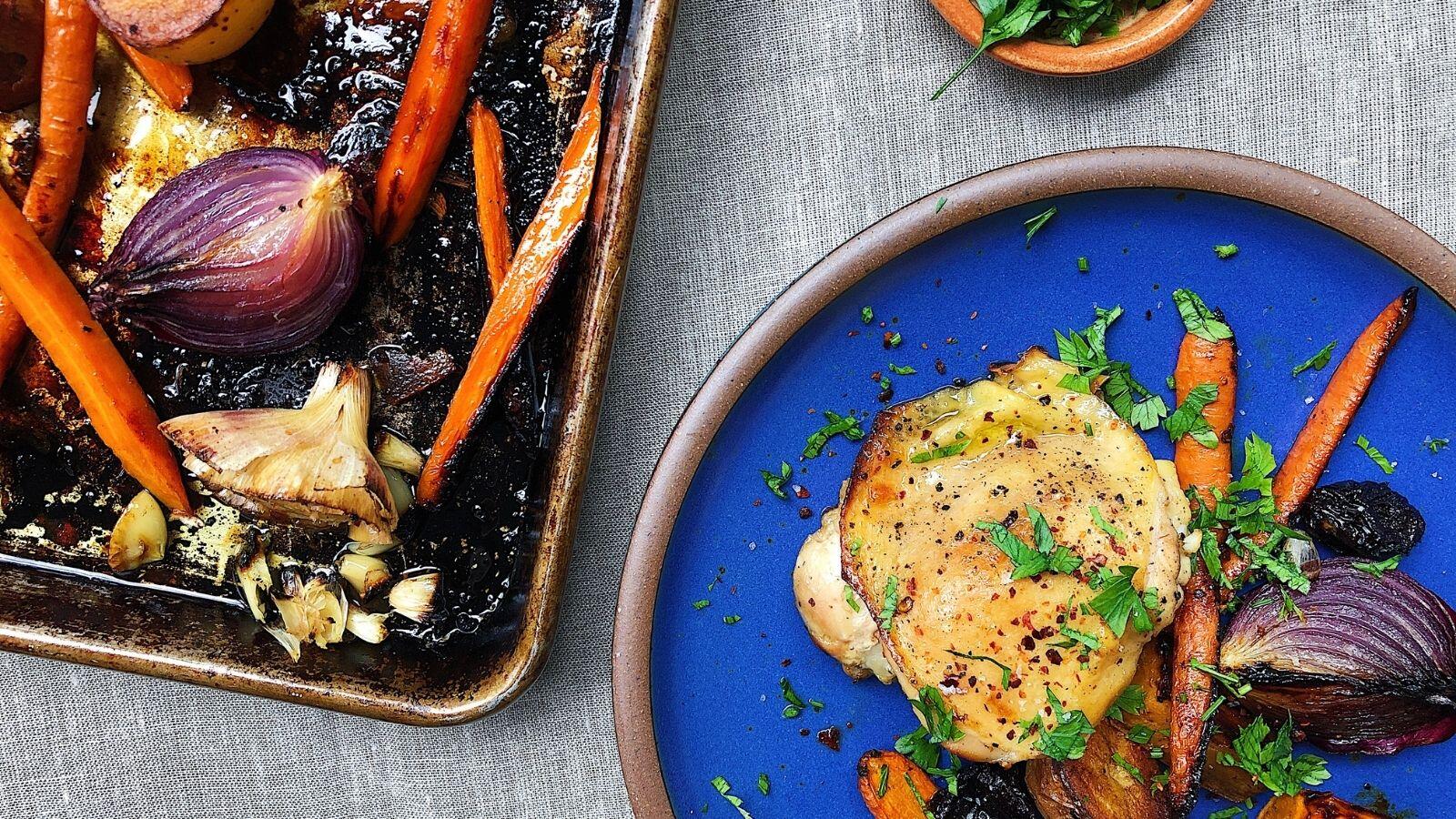
Other contemporary recipe developers, like Liz Alpern and Jeffrey Yoskowitz of “The Gefilte Manifesto” and Jake Cohen of “Jew-ish” both merge tzimmes with a roast chicken. Cohen, as is increasingly common in modern tzimmes recipes, adds orange juice.
Writer and author Leah Koenig once described tzimmes as having a PR problem because “tsimmes, as many Americans know it today, has been reduced to a gloppy, cloyingly sweet compote” that plays into the stereotype that Ashkenazi cuisine is brown and bland. To “amp up” the original dish, Koenig adds ginger and mango to her recipe. Wex, too, offers something of a remedy. In “Rhapsody in Schmaltz,” he writes that “tsimmes is limited only by the fruits or vegetables available and the cook’s imagination… There are tsimmesn made of apricots, raisins, apples, plums, and pears. Tsimmesn to scare your kids with; parsnip, garbanzo, green bean, farfel, lima bean, rutabaga, prune, and turnip.” He concludes that these ingredients “can be mixed and matched anyway you please.”
Simply put: With tzimmes, the sky’s the limit.
